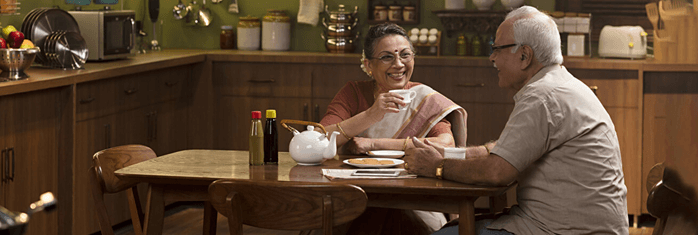Parkinson’s is a progressive disease which means that the disease symptoms changes over time and affects different people differently. Caring for someone who has advanced Parkinson’s disease in your house calls for a lot of patience, love, care and time commitment. The patient is likely to have mood swings and a general feeling of resentment, frustration and angst at the loss of independence caused by the disease. As the care giver recognizing that these are natural reactions is an important part of managing and giving good care to those with Parkinson’s in your home
One of the important considerations to drive if you are care giver for someone with Parkinson’s disease is to ensure that the patient relives some degree of independence in his or her daily life. This will help the person gain confidence and live a fuller life and at the same time help you manage your time and care more effectively.
To enable this to happen, as the care giver, you will need to make some modifications in your life and in the home environment.
Here are some useful guides and tips that you as the care giver could do to make life easier for your family member as well as for yourself
Make changes in your home environment
- 1 : Remove carpets from the floor. Carpets are dangerous as the likelihood of catching the feet during the shuffling walk could lead to the feet getting trapped under the carpet and the patient falling.
- 2 : Re-arrange furniture in the house to ensure that there is plenty of space for the person to move around
- 3 : Make sure that there are no open and hanging wires connecting to sockets in the walk area. Chances of tripping over them is very high
- 4 : Invest in the right furniture of your patient. Remember Parkinson patients have trouble in sitting and getting up. Hence straight back chairs are best for them, especially those with arm rests. Have a firm cushion placed so that that height is added to the chair to make it easier to get up
- 5 : Make sure that all the important number on the patient’s mobile are set to speed dial
- 6 : Explain and show the patient how to record a message and send a voice message on the phone instead of typing.
- 7 : Have hand rails or grip bars installed places where there is nothing to hold on to
- 8 : Get a walker for the patient. This will help the patient move along independent of you
- 9 : In the bathroom do the following:
- Have a shower seat for bathing so that the patient does not have to stand up and take a bath
- In case you do not have a shower bath, buy a shower bath, as this will let the person independently have a bath
- Have anti-skid mats put into the bathroom
- Have grip bars installed in the bathroom and in the toilet area which can be used by the patient to steady himself
- Put soaps into loofa pouches as it would provide better grip to soap oneself
- Use an elevated toilet seat or safety rails to make it easier for the patient to get up
- 10 : If the patient does work in the kitchen, ensure the following
- Have a kitchen chair in which the patient can sit while doing normal kitchen chores including cooking. Make sure that the counter top is at a height to be managed well with the person sitting
- Do not have glass bottles in the house. Move to plastic containers. This will avoid chances of falling containers and breakage in the home
- Make sure that the utensils used are all with a large base. The chances of the utensil being knocked over accidently will be significantly reduced.
- Do not allow the patient to cut vegetables with a knife. Use a food processer to cut or peel vegetables
- Store utensils in a cupboard that is easy to reach and use.
- Make sure that the counter top has a non-skid mat so that dishes and utensils remain steady.

- 11 : Make the environment friendly and warm by doing the following things:
- Use scented candles or burn agarbathi
- If the person is religious, allow soft religious songs to be played in the person’s room. This will soothe the person immensely
- Put up pictures of the entire family in the person room and in the living room. Happy memories will ease the pain and make the patient aware that he or she is surrounded by loved ones
- Having a pet to take care off such as a bird or fish can be extremely soothing and relaxing.
- 12 :Make sure that the clothing is changed to enable the person to dress and undress himself. Showing the patient that he or she can live independently is all too critical in building confidence.
- Have clothes that do not have buttons and instead have a Velcro. In case buttons are to be used, there are tools available today that can help the patient put on buttons easily.
- Shoes should not be with laces. Instead Velcro types as well as slip on will do the job effectively
- Buy brushes that have large handles for easier grip
Becoming a care giver is a role and identity that one grows into. It can be as frustrating to be a care giver as it is to be a Parkinson’s patient. By making sure that you allow the patient to live a full life, you will allow yourself to retain yourself identify.
As a caregiver you must closely observe the person with Parkinson’s Caregivers must closely observe the person with Parkinson’s over time to detect and respond helpfully to subtle changes in motor function and mood so that you approach and care giving changes accordingly.
Finding the right balance is key to addressing the challenges of becoming a care giver to a patient who has Parkinson’s disease.



















